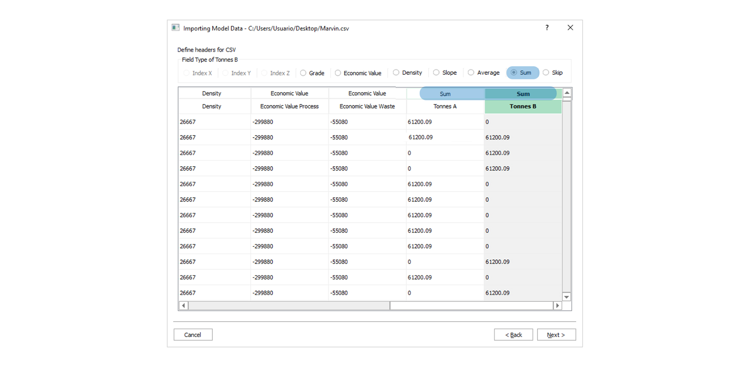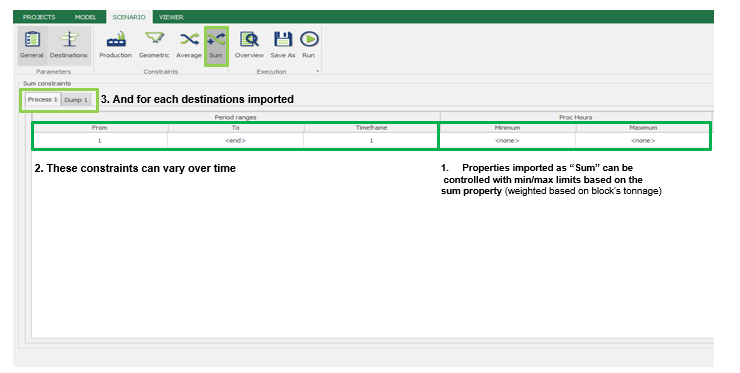Material Types
Highlights
Accurate definition of lithotypes or rock types in the block model is essential for controlling material classification and flow in mine planning. These definitions serve as the basis for generating auxiliary columns that aggregate variables across the model.
- Allows integrated classification and optimization by using rock types as operational constraints. MiningMath automates this connection between geology and planning.
- Facilitates quick scenario testing through flexible use of auxiliary columns to define inputs like density or economics.
- Minimizes manual rework, as updates to lithotype definitions are automatically reflected across the entire optimization process.
Mining fronts, rock type, or lithotype are usually defined in the block model as strings or converted to integer numbers. As the next step, the user defines which ranges of material types should be allowed, avoided or forbidden in the processing plant.
The ideal way to model material types for further control of this variable is to create tonnage columns for each material type. Therefore, you will be allowed to:
Control material types to be allowed, avoided, or forbidden in any destination.
Control the proportions of different material types, if applicable.
Analyze scenarios with different levels of flexibility.
Understand how the project development changes in face of each hypothesis tested.
Assess the impacts of the flexibility level given on economic and technical variables of the system.
The general idea is to create auxiliary columns in the block model to control any variable through their sum. Then, use the same idea of if-then-else statements, example:
If variable value matches condition
Then auxiliary column equals to X
Else auxiliary column equals to Y
To control the amount of material by rock type, create columns for tonnages of each lithotype, as shown in Figure 1, where:
Lithotype A has its tonnage inputted in the field Tonnage A.
Lithotype A equals zero for fields Tonnage B and Tonnage C, as it does not match the specified condition, i.e. being a lithotype B or C.
The same concept is used to the other material types.
Figure 2 shows the same concept being applied to measured, indicated, and inferred resources.
Whatever is the variable being modeled, the columns created with a similar purpose should be assigned to the field type “Sum”, during the importation, as shown in Figure 3.
On the interface, the user will need to insert General and Destinations parameters in order to enable the Sum tab (Figure 4). The next step is to define the limits to be imposed to each variable, to which destinations, and to which period intervals.
Figure 3: Importation screen where variables to be controlled through sums are properly assigned to the field type “Sum”.
Figure 4: Illustrates the interface and options available.






